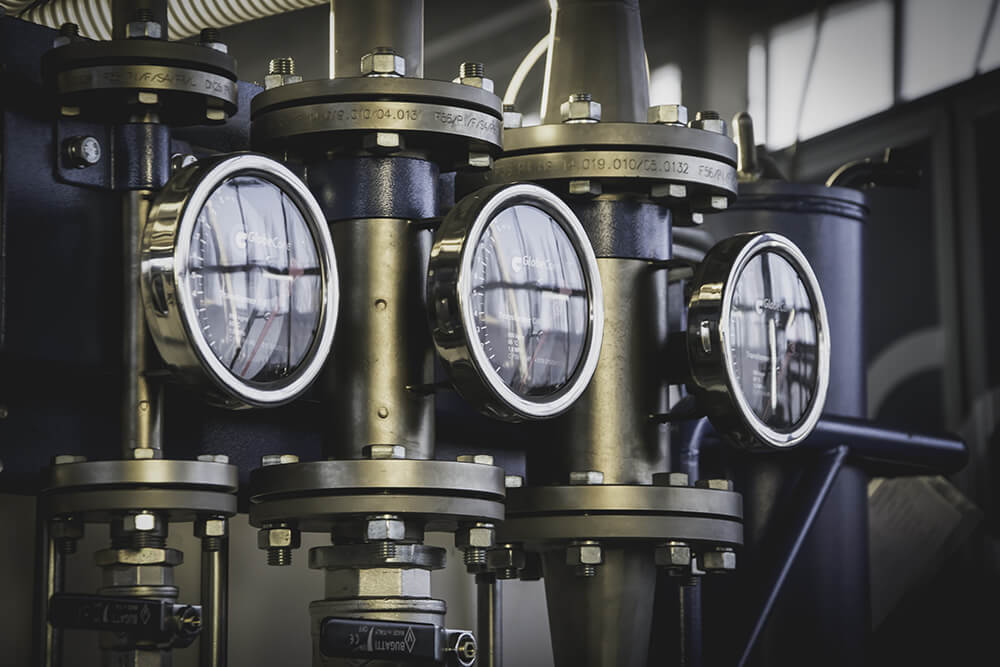Operation and long storage of lube, turbine and other industrial oil cause contamination of the oil, leading to poor performance. With time, this process causes increased equipment wear, and, in case of electrical insulation oil, failures in electricity transmission grids. It is practically impossible to prevent or stop this process. However, the oxidized oil can still be used. Many high quality and efficient oil purification process have been developed to remove gas, water and particulate matter from oil. The purification processes can generally be divided into physical, chemical and combined types.
Let us consider how contamination of oil influences its performance, and see how the best oil purification process work. Note that oil purification process can be classified according to which kind of contaminant they are most effective against.
How contaminants influence oil
Moisture in the oil originates from decomposition of the liquid, from the air and from cellulose insulation. In the latter case, some water will remain in the insulation system even after dehydration. High temperature increases the rate of moisture contamination. If the mixture is cooled, water precipitates. As a result, water permeates insulation or mixes with the products of oil decomposition. Moisture accumulation is usually irregular, with highest concentrations observed at the locations of the highest stress.
Organic substances, formed in the process of oxidation, and metals settle on solid insulation, walls of transformer tank, in the cooling system etc as acidic sludge. If the equipment operates under high loads and temperature, the rate of oxidation increases. Contaminated oil becomes thicker and its cooling abilities are reduced. Contamination is the main cause of solid cellulose insulation damage. The higher contamination of the oil, the more moisture it absorbs; the result is that the oil cannot provide sufficient dielectric strength. Sedimentation on transformer cores cause overheating. All of these factors cause premature wear and failure of the equipment.
Most common oil purification process
Centrifugal, adsorption and thermovacuum purification methods are applied to remove excess of moisture from oil.
In a centrifuge, contaminants are separated from the oil by centrifugal forces inside a rotating drum. This oil purification process is fast, although it has limited moisture removal capability (600 ppm is probably the best result that can be reached in the process, whereas 10 ppm is the standard requirement); besides, the equipment is quite complex and suffers from low reliability and the need to constantly monitor the process.
Adsorption oil purification process uses materials with porous surface. They capture moisture and other contaminants and remove them from the oil. This process is limited by low durability of adsorbent media, which must be disposed of after processing, as well as low rate of the oil purification process. Adsorbents can also effectively reduce acidity of the oil.
As for thermovacuum drying, this method is based on the difference of temperature between liquids in a dispersed system. Low pressure causes water to evaporate from the oil almost at room temperature. In this process, the amount of water in the oil can be reduced to the required 10 ppm. The equipment is simple and reliable. The oil purification process is automated and easy to control. Beside water, this process removes gas from the oil. High vacuum oil processing is a relatively slow process however.
Filters are virtually a mandatory part of any oil purification process.
GlobeCore oil purification equipemnt
The CMM-4/7 by GlobeCore is a unit designed to remove moisture, gases and particulate matter from used electrical insulation oil. The unit has three modes:
- Oil heating and filtration;
- Degassing;
- Evacuation of other equipment.
The oil purification process by GlobeCore units makes it possible to achieve the following quality parameters:
- Gas content below 0.1 %;
- Particulate matter below 8 ppm;
- ISO 4406 purity class -/14/12;
- Filtration – 5 μm;
- Moisture content at or below 10 ppm;
- Dielectric strength 70 kV.
The unit’s processing rates are:
- Degassing, drying and filtration mode – 4 m3/hour;
- Heating and filtration – 7 m3/hour.
The unit includes the following components:
- Vacuum chamber;
- Oil input and output pumps;
- Oil heater;
- Filters;
- Control cabinet;
- Piping;
- Vacuum and backing pumps.
The CMM-4/7 is designed for operation in ambient temperature +5 to +40 оС, at 70% humidity. The unit requires hard surface for installation. On site maintenance, power and oil line connections must be taken into consideration when placing the unit.

